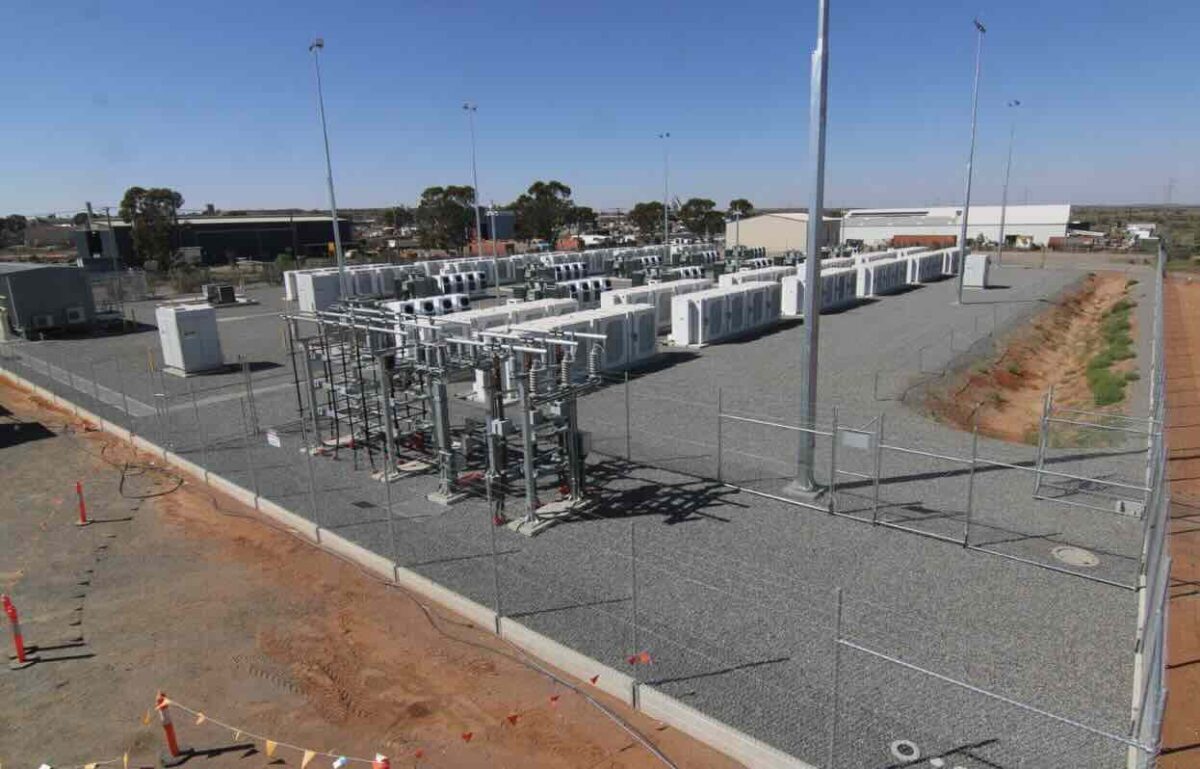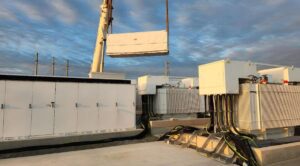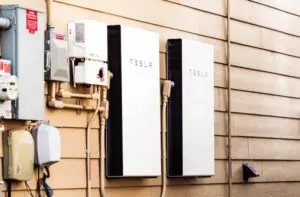
A NSW parliamentary committee looking into the blackouts in Broken Hill and surrounding regions last October has recommended that grid connection rules be reviewed, after it was confirmed that a brand new battery designed specifically to provide back up in such incidents was not allowed to do so.
The power went out in Broken Hill and surrounding areas late in the evening on Wednesday, October 16 last year when seven towers along the only transmission line linking the area to the main grid were blown down, and the link failed.
One of the ageing diesel back-up generators was also offline, unbeknown to authorities, and the other struggled to cope and kept on tripping or being forced offline at regular intervals.
But, as Renew Economy noted at the time, the mining city has its own big battery, a 50 MW, 50 MWh facility built by AGL – and commissioned earlier last year – with the specific purpose of being able to provide back up power in such occasions.
See: Broken Hill has a wind farm, a solar farm and a big battery. So, why are the lights out?
It even received funding from the Australian Renewable Energy Agency to install grid forming inverters just for this purpose. But because of the restrictions of its connection agreement, known as the Generation Performance Standard, it was not allowed to do so.
The hearing into the blackout heard from AGL that the battery – had it been properly permisioned and authorised – could have swung into operation in an instant.
In the event, it took AGL just over a day (July 18) to check off on the technical details, but it wasn’t until July 26 that it was finally given permission by the Australian Energy Market Operator and network company Transgrid to switch on these back-up capabilities.
The committee has expressed its astonishment at the situation, and urged – as one of its key recommendations – that such GPS settings be reviewed. In reality, it is one of a number of perverse clauses, through a range of policy, market and regulatory settings, that are standing in the way of a rapid switch to a green grid.
One committee member, James Wallace, noted that Transgrid, in its own submission, had claimed that the battery connection had been “fast tracked”. But AGL had made clear it was not switched on until October 26, even though from its point of view, it was ready to go on October 18.
“Why was there a delay for a week? What were you doing during that week?” Wallace asked of AGL’s head of battery operations David Bowly. “What was happening?”
Bowly said his team, having advised Transgrid of its work to make the battery ready on Friday, October 18, had been told to “stand down.” They then fielded technical questions from Transgrid over four consecutive days from Monday of the following week.
“On the Friday before we connected – so this is now eight days into the outage – everything started happening quite quickly,” Bowly said.
“We got approval at 2.00 a.m. on the Saturday morning from AEMO with a modification to our generator performance standard to say ‘you are now allowed to connect and these are the conditions under which you’re allowed to’ – so, very severely limited conditions.
“Then at about 12.00 p.m. on the Saturday, we got permission from Transgrid’s control room to start connecting core transformers to come online. But the majority of that week was the grid modelling team working through the technical challenges to make sure the battery didn’t cause any further issues on the grid.”
Bowly said that when the battery was connected, it clearly made a difference as it was able to respond quickly to sudden changes of demand, and helped to stop further trips of the diesel generator and yet more outages.
But he says it was only allowed to operate at one tenth of its capacity.
“AGL’s view is that it would be more efficient for the entire battery to be online, and there’s a number of other services that the battery is capable of providing.
“One of the key ones for a battery is droop control, so the battery controls frequency automatically on the grid. Essentially what that means is if someone turns on a large load in town, a large motor, or 100 people turn on their cooktops, the battery will automatically smooth out that bump.
“During the outage, Transgrid were doing that manually, because of the way that the gas turbines had to be operated.”
Bowly says AGL knows it can do this because it already operates the Dalrymple North battery in South Australia, where it is located next to a wind farm in an isolated part of the state, on the Yorke Peninsula.
Broken Hill also has a large wind farm, the 200 MW Silverton facility, and a 50 MW solar farm, which were also off line at the time because of the transmission failure, and the nature of their GPS requirements.
“The (Dalrymple) battery starts controlling the grid and essentially runs the grid until the line can be restored, and that service has been in place for six years and proven,” Bowly says.
“We know that batteries are capable of doing this. It just requires a fair bit of energy and work to make it happen.”
Transgrid, is response, said there were significant technical and regulatory challenges to the battery connection.
“While AGL indicated that it would be possible to operate the battery in islanded mode, there were significant technical and regulatory challenges that needed to be fully understood and addressed before the battery could be connected to, and commence supply of energy to, the local grid,” it said in response.
Committee chair Clayton Barr said it was clear that the local community could not understand why power was not available, when the Broken Hill area had its own big battery, wind farm and solar farm.
“This was due both to commercial interests and the strict electricity network rules,” he wrote in his summary. “This needs to be looked at and resolved before any future outage occurs.”
He noted that identifying the responsible party is as difficult as “holding a wet soap in a hot spa,” but taxpayers should not be left footing the bill.
The committee is also recommending that other isolated towns and communities we equipped with renewable micro-grids, to ensure that they can be protected from transmission line failures and the fickle nature and supply issues of diesel generation backup.
Some are already in progress. A micro-grid at Tibooburra prevented a blackout in that town, and by 2027 it will rely on solar and a battery only. Similar installations are planned for Wilcannia and Menindie. The committee also urged local and regional microgrids for other towns in the region, and for First Nations communities.
And Transgrid has also said that it will work with Tilt Renewables, the owner of the wind and solar farms, to ensure that they can operate once the new advanced compressed air storage project is delivered from 2028, and it is also working with AGL to modify the GPS, to allow it to quickly operate in islanded mode in any future event.
“Transgrid now has a protocol to safely operate the BESS and Transgrid is working with AGL to attain formal Generator Performance Standards (GPS) approval to enable use of the battery to provide future backup supply in the event of another outage of the X2 transmission line.”








